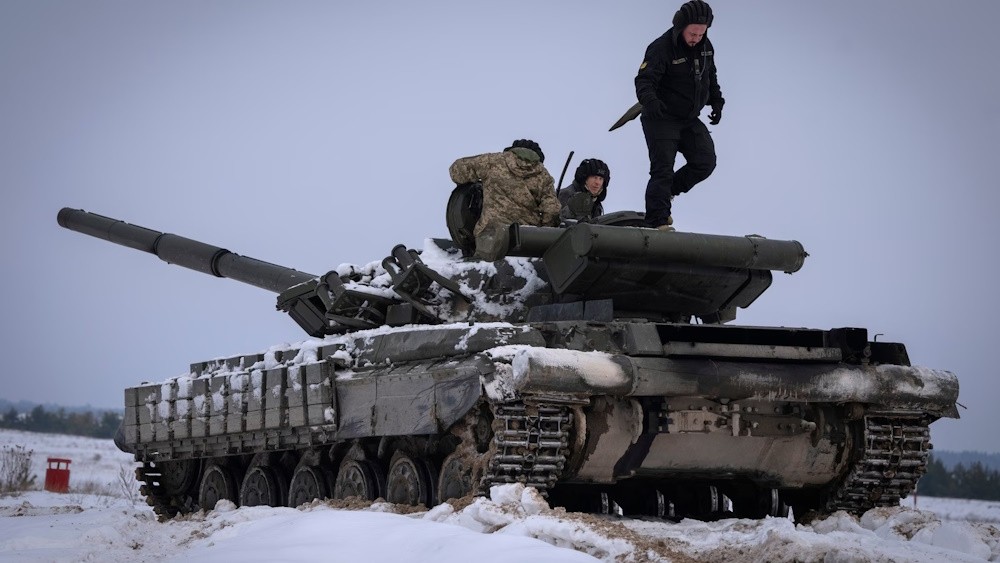What the European War Means for the American Economy

Those who argue that the United States should back Ukraine sometimes cite moral or strategic duties to the country. More recently, they have been arguing that it is beneficial to the economy.
Demand for weapons and ammunition has skyrocketed in the United States defense industry in the two years following Russia’s invasion of Ukraine. Companies are seeing increased business from the Pentagon, which is purchasing new defense equipment and restocking military supplies that were depleted by delivery to Ukraine, and from European allies who are attempting to strengthen their military capabilities.
Data from the Federal Reserve shows that industrial production in the United States’ defense and space industry has grown by 17.5% since Russia’s full-scale invasion of Ukraine two years ago.
Approximately 64 percent of the $60.7 billion allocated to Ukraine in the $95 billion supplemental military bill will recirculate to the United States’ defense industrial base, according to officials from the Biden administration.
“That’s one of the things that is misunderstood…how critical that money is for employment and output around the country,” said Lael Brainard, director of the White House National Economic Council, in an interview on Wednesday.
Although economic effects of war are common, the United States is not directly involved in this conflict.
There has been “a generational-type investment” in U.S. jet aircraft and other military gear by European nations recently. “The last several years are on par with the previous twenty,” stated Myles Walton, an analyst at Wolfe Research who specializes in the military market.
The $95 billion aid plan, which includes cash for Israel and Taiwan, was approved by the Senate on February 13, but its House status is unknown due to opposition from Republican backers of former president Donald Trump, who is leading the GOP presidential primary race.
They argue, among other things, that the United States cannot afford to back Kyiv due to growing federal deficits, that Russia will ultimately win nonetheless, and that the United States must first ensure the security of its own borders before sending additional aid abroad.
This new funding, on top of earlier pledges, might, over the course of several years, pour resources into the United States’ industrial military base equal to around 0.5 percent of GDP.
More than five times the historical norm, according to Walton, the United States made over $80 billion in big arms purchases in the year through September, with over $50 billion going to European allies. This information was recently released by the State Department.
According to the department, Poland has made a substantial purchase of weapons, including Apache helicopters, M1A1 Abrams tanks, and High Mobility Artillery Rocket Systems (Himars), valued at over $30 billion. The Czech Republic purchased F-35 fighter fighters and ammunition for $5.6 billion, while Germany paid $8.5 billion on Chinook helicopters and associated equipment.
The boost to the U.S. defense industry is just one way the fragmentation of the world economy along geopolitical lines is tightening U.S.-European relations, often to the benefit of the U.S.
The cutoff of Russian gas supplies sent energy prices and inflation up sharply in Europe, while boosting European demand for U.S. liquefied natural gas.
The U.S. became the world’s largest LNG exporter last year, and its LNG exports are expected to almost double by 2030 on already-approved projects. Around two-thirds of those exports go to Europe.
Five new LNG projects are being constructed in the U.S., representing investments of around $100 billion in total, said Alex Munton, director of global gas and LNG research at Rapidan Energy Group. Most of those projects only began construction after the start of the Ukraine war, he said, as the disruption to Europe’s gas supplies proved the value of LNG to potential backers and helped to move planned projects forward. “The U.S. economy benefits significantly because of these massive investments,” Munton said.
Foreign direct investment to the U.S. increased by almost 50% between the 12 months through June 2021 and the same period in 2023, according to the Paris-based Organization for Economic Cooperation and Development, an association of market-based democracies. European companies in particular are lured by access to cheap and abundant energy.
Military aid is, by itself, no economic panacea. While defense companies are adding jobs, those tied to Ukraine are a relatively small share of national employment and income. “I don’t think you can say confidently that the U.S. economy is larger as a result of the war, but certain sectors of the economy are certainly larger,” said Marc Goldwein, senior policy director for the Committee for a Responsible Federal Budget.
The money also takes time to flow. Congress has to authorize funds to replenish Pentagon stocks, and then the Pentagon has to sign contracts for new equipment. Foreign sales of major weapons can take years and sometimes fall through. Poland’s annual military budget is about $16 billion, so it isn’t clear how the country can pay for $30 billion of new weapons orders anytime soon, said William Hartung, senior fellow at the Quincy Institute for Responsible Statecraft.
“We know that there are tens of billions in potential contracts on the table for U.S. firms based on the direct and indirect effects of the war in Ukraine, but it’s less clear how soon the companies will see those funds,” he said.
While European governments are paying for their orders, much of the spending is being financed by U.S. taxpayers or by borrowing, adding to the federal deficit.
“Military spending has been crowding out other spending,” said Jason Furman, an economist at Harvard University. He noted that Vietnam War spending in the 1960s contributed to an overheating of the U.S. economy and high inflation.
The Biden administration, though, sees benefits. Military experts are concerned that decades of deindustrialization and miliary downsizing have left the defense industrial base unable to deliver the weapons and munitions necessary for a more dangerous world. Many weapons systems orders are backlogged for years.
The Ukraine war served as a warning for American defense strategists, said Cynthia Cook, a defense industry expert at the Center for Strategic and International Studies, a Washington-based think tank. “What Russia’s war pointed out relatively quickly is the constraints in the U.S. defense industrial base especially in terms of serving production rapidly. The good news is that this lesson has been learned when the U.S. is not directly at war.”
British defense contractor BAE Systems plans to create 500 jobs by expanding facilities in Minnesota, while General Dynamics will create around 120 position at a new plant in Texas, according to Cook.
Biden administration officials say funding allocated for Ukraine is rebuilding America’s defense industrial base, jump-starting and expanding production lines for weapons and ammunition, and supporting jobs in 40 states.
The administration might also hope for political benefits by noting the impact on employers in electoral swing states such as Pennsylvania and Arizona, each of which will receive more than $2 billion, according to the Department of Defense.










